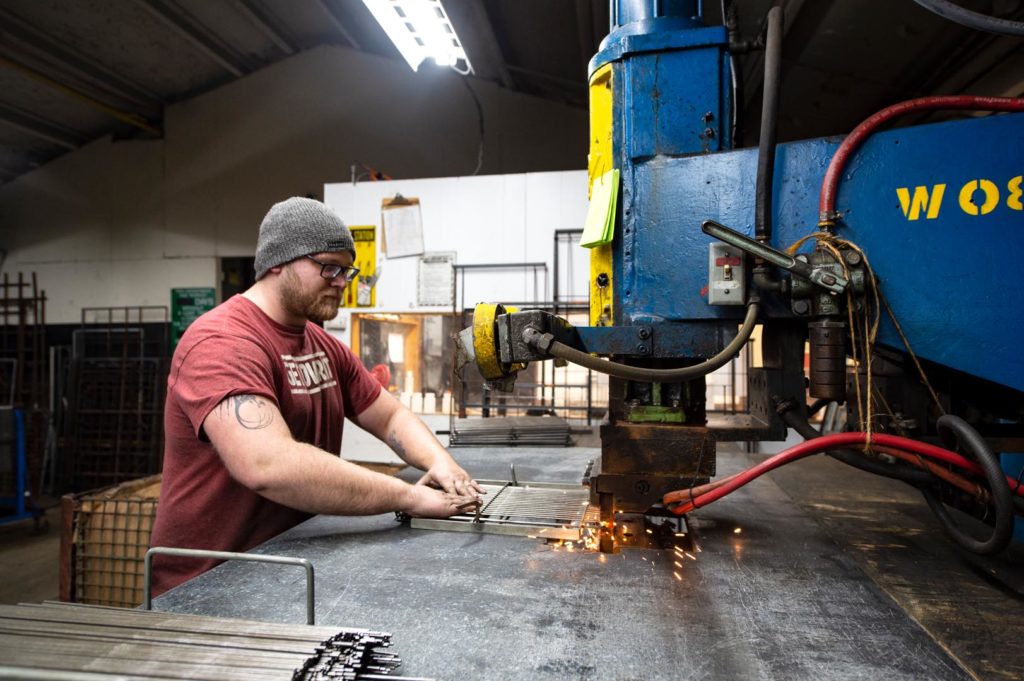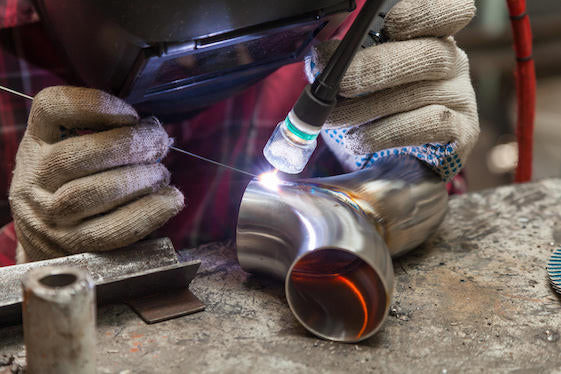Most frequent weld defects solved by Belgrade Welding experts
Everything about Welding: Key Insights Into Techniques and Finest Practices for Success
Welding incorporates a range of techniques, each suited for specific materials and applications. Comprehending these methods, such as GMAW, SMAW, and TIG, is necessary for accomplishing optimal results. The right equipment and safety and security practices can not be forgotten. As preparation and troubleshooting play crucial functions in the welding procedure, grasping these aspects can substantially boost the high quality of the end product. What are the essential variables that assure an effective weld?
Recognizing Various Welding Strategies
Welding strategies include a selection of methods, each matched to certain applications and products. Amongst the most usual techniques are Gas Steel Arc Welding (GMAW), Secured Metal Arc Welding (SMAW), and Tungsten Inert Gas Welding (TIG) GMAW, additionally called MIG welding, is popular for its rate and versatility, making it excellent for thin products. SMAW, or stick welding, is favored for its simplicity and effectiveness in outdoor settings, specifically with thicker steels. TIG welding offers accuracy and control, making it suitable for detailed job and non-ferrous metals (Welding). Each method has its distinct benefits and considerations, permitting welders to pick the most effective approach based upon the project's requirements, product kind, and wanted end results. Comprehending these strategies is necessary for effective welding
Vital Welding Tools and Tools
While numerous welding methods require specific skills, the best devices and devices are just as crucial for accomplishing top quality outcomes. Important welding devices includes welding machines, which vary depending upon the method-- such as MIG, TIG, or stick welding. Safety equipment, including gloves, aprons, and safety helmets, warranties security and convenience throughout the process. Furthermore, fixtures and clamps aid protect materials in position, making sure accuracy in welds. Consumables like welding poles, cable, and shielding gas are additionally important elements that affect the high quality of the weld. Devices such as grinders and cutters promote surface prep work and post-weld ending up, contributing to a specialist result. Investing in top quality equipment ultimately improves the performance and efficiency of welding projects.
Safety Practices in Welding
Appropriate safety practices are essential in the welding sector to secure workers from possible dangers. Welders should put on appropriate individual protective tools (PPE), including safety helmets with appropriate shading, gloves, and flame-resistant apparel. Sufficient air flow is crucial to minimize exposure to dangerous fumes and gases produced during the welding process. Additionally, employees must be trained in the proper handling of welding devices to stop crashes. Fire security steps, such as keeping flammable materials far from the welding area and having fire extinguishers readily available, are necessary. Regular examinations of devices and work areas can assist recognize prospective hazards before they cause mishaps. By sticking to these safety practices, welders can develop a safer working environment and minimize risks linked with their profession.
Readying Materials for Welding
Preparing materials for welding is a vital step that significantly influences the top quality and integrity of the end product (Fabrication). Proper preparation includes cleansing the surfaces to get rid of pollutants such as rust, oil, and dirt, which can endanger the weld. Strategies such as grinding, fining sand, or using solvents are frequently utilized to accomplish a tidy surface area. Furthermore, making sure that the materials fit together comfortably is crucial; spaces can cause weak welds. It's additionally crucial to consider the alignment and positioning of the components, as this will certainly influence the ease of welding and the final result. Choosing the appropriate filler material and making sure compatibility with the base steels is essential for attaining solid, long lasting welds.
Tips for Achieving High-Quality Welds
Achieving high-quality welds needs interest to information and adherence to finest methods throughout the welding process. Proper joint preparation is vital, ensuring surface areas are free and tidy from impurities. Choosing the appropriate filler material and welding strategy based on the base steels is vital for perfect bonding. Preserving consistent travel rate and angle while welding can protect against problems and advertise uniformity. Furthermore, regulating warmth input is important; too much warmth can lead to bending and weakened joints. If essential, consistently examining the welds during the process permits for prompt changes. Lastly, employing ideal post-weld treatments, such as cleaning and stress relief, can improve the durability and integrity of the weld, ultimately making sure an effective result.
Fixing Typical Welding Issues
Welding typically presents difficulties that can influence the top quality and honesty of the last product. Common issues such as porosity, irregular weld grains, and overheating can develop, each requiring certain fixing methods. Comprehending these troubles is crucial for welders to boost their skills and attain ideal results.
Porosity Issues Clarified
Although porosity can frequently be neglected, it stays an important problem in welding that can endanger the integrity of an ended up item. Porosity refers to the visibility of little gas pockets within the weld grain, which can lead and weaken the joint to premature failing. This trouble generally develops from impurities, dampness, or incorrect securing gas protection during the welding process. To mitigate porosity, welders should validate that the base materials are clean and dry, use proper protecting gases, and keep constant welding parameters. Routinely evaluating the equipment and environment can additionally help determine possible concerns prior to they materialize in the weld. Attending to porosity properly is important for accomplishing strong, resilient welds that satisfy high quality criteria.

Irregular Weld Beans
Inconsistent weld grains can greatly impact the top quality and strength of a completed product. Numerous factors add to this problem, consisting of improper traveling speed, inaccurate amperage settings, and irregular electrode angles. When the welder relocates also rapidly, a grain may appear narrow and do not have infiltration, while moving too slowly can create too much build-up. In addition, utilizing the wrong amperage can cause either undercutting or too much spatter, both of which compromise weld integrity. The welder's strategy, such as irregular lantern activity, can likewise lead to unequal bead appearance. To reduce these troubles, welders should concentrate on keeping steady, regulated activities and guaranteeing correct devices setups to attain uniformity in their welds. Consistency is vital to achieving reliable and solid welds.
Getting Too Hot and Warping Issues
Extreme warmth throughout the welding process can cause significant getting too hot and buckling issues, affecting the structural honesty of the work surface. These problems commonly show up as distortion, which can compromise placement and fit-up, making additional setting up testing. Aspects adding to overheating include the option of welding criteria, such as voltage and travel speed, in addition to the kind of product being welded. To reduce these concerns, welders ought to keep regular traveling speed and ideal heat input while keeping track of the workpiece temperature level. Additionally, preheating or post-weld warmth treatment can help minimize stress and anxieties triggered by rapid air conditioning - Montana Mobile Welding and Repair Welding. Normal assessment and adherence to finest methods are necessary in protecting against overheating and guaranteeing the long life and reliability of welded frameworks
Frequently Asked Inquiries
What Are the Occupation Opportunities in the Welding Industry?
The welding industry offers varied profession possibilities, including positions as welders, educators, examiners, and designers. Specialists can operate in manufacturing, construction, aerospace, and automotive markets, taking advantage of strong demand and competitive wages in various functions.
Just How Can I Enhance My Welding Rate Without Giving Up High Quality?
To boost welding speed without sacrificing top quality, one need to practice reliable techniques, keep tools, enhance settings, and enhance hand-eye sychronisation. Regular training and looking for comments can also considerably contribute to attaining quicker, high-grade welds.
What Accreditations Are Available for Welders?
Various qualifications exist for welders, including those from the American Welding Culture (AWS), the National Center for Building Education And Learning and Research Study (NCCER), and various industry-specific organizations. These qualifications improve employability and show skill efficiency.
How Does Welding Influence the Qualities of Metals?
Welding affects the residential properties of metals by changing their microstructure, which can result in modifications in stamina, ductility, and firmness. Heat input and air conditioning rates during the process significantly influence these product attributes.
Can I Weld Dissimilar Metals Together?
